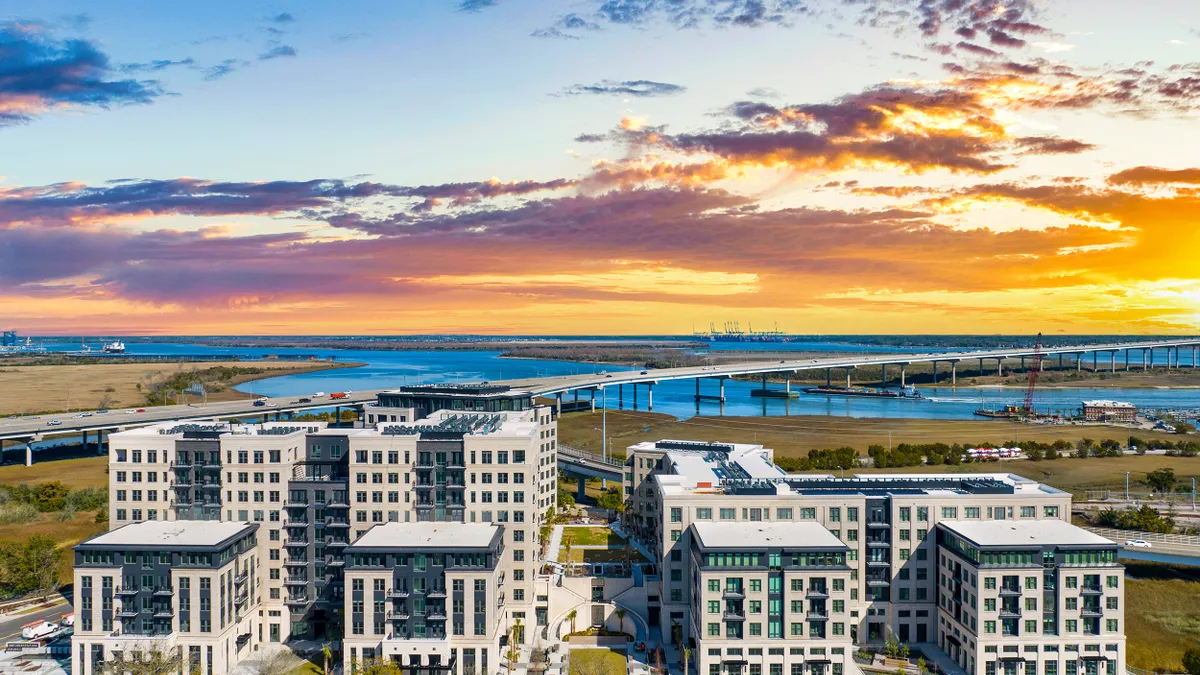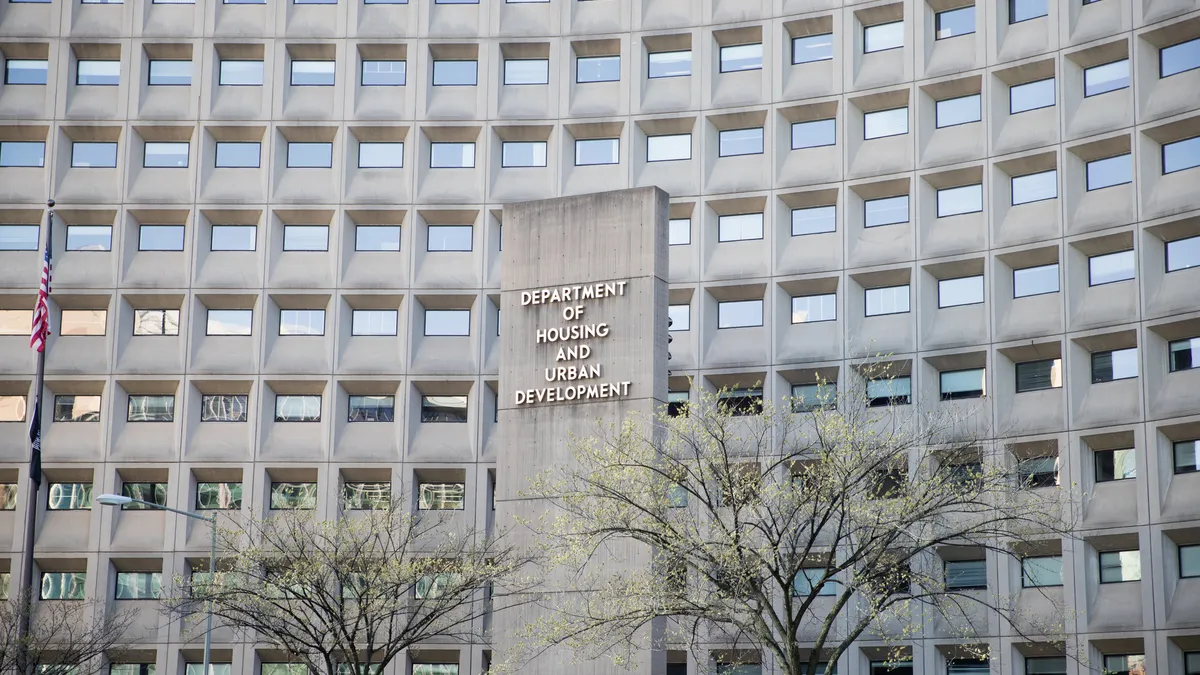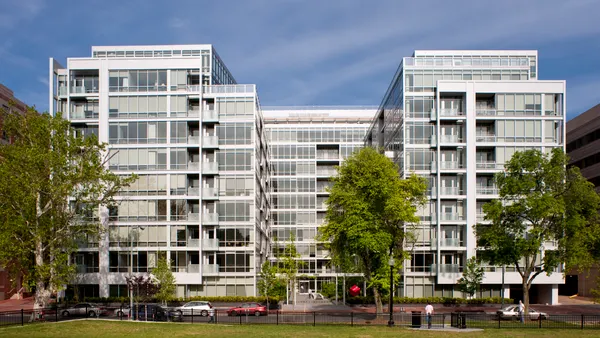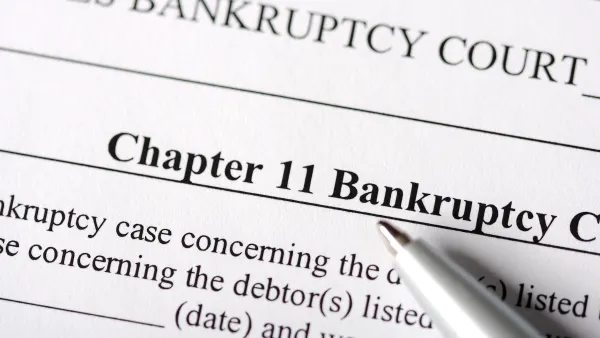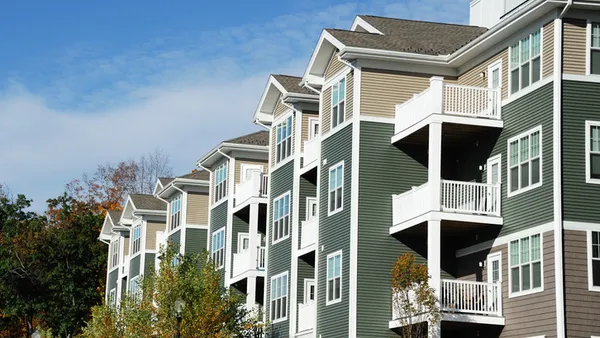It's been almost 20 years since Greg Bonifield and Mike Underwood founded Charleston, South Carolina-based apartment developer Woodfield Development after their previous employer, Charlotte, North Carolina-based REIT Summit Properties, was acquired by Houston-based Camden Property Trust.
When Bonifield and Underwood launched the firm, they intended to add a new market and on-the-ground development partner every couple of years. So far, they’ve stuck to that plan.
Early on, Woodfield was developing in the Carolinas and Mid-Atlantic. Since then, it expanded to the Northeast, Florida, Tennessee and Texas. “We've added an experienced developer and development team every couple of years since our inception,” Bonifield told Multifamily Dive.
As it has expanded, Woodfield has established itself as one of the country’s biggest developers, taking the No. 16 spot on the National Multifamily Housing Council’s top developer list this year. It has completed 65 properties since its founding and has 21 in production.
While some firms have postponed projects as interest rates have risen, Woodfield continues to break ground on new starts. “We had 10 starts last year,” Bonifield said. “We're on track to have at least that many this year.”
Supply is a concern in some of Woodfield’s markets right now, but Bonifield expects that dynamic will change by 2026.
“Even the markets that feel a little overbuilt right now look really good within 18 months at most,” Bonifield said. “So we're taking the approach that now is a good time to get shovels in the ground and start new projects.”
Here, Bonifield talks with Multifamily Dive about the debt markets, labor costs and the apartment sales environment.
This interview has been edited for brevity and clarity.
MULTIFAMILY DIVE: How has the debt market changed for developers since the Federal Reserve began raising interest rates in 2022?
GREG BONIFIELD: We've been in a different market for a year and a half. Last year, after a couple of bank failures that occurred, debt became much more difficult for a period of time. Debt is less difficult today than it was during the first three quarters of last year. It has opened up to a degree.
So, debt is available for projects that underwrite. We have been fortunate in finding partners who see our vision of getting stuff out of the ground now, but a lot of [limited partner] equity is still on the sidelines, probably waiting to see when the Fed is going to make a move and start pivoting.
Have you seen labor prices improve as construction starts have fallen?
There's no question it's taken a long time for the labor market to start realizing that there are fewer projects coming their way. That's natural because it's not like people stopped building on a dime when the market changed.

So, the subcontractors and general contractors have been very busy. They had a lot to keep themselves busy, but they're finally seeing that there's a dwindling of new starts. There’s a dwindling of new deals that they’re pricing or they’re pricing deals that aren’t getting done.
So, we're finally seeing some movement on pricing. We're starting to get subcontractors to sharpen their pencils and make the pricing so we can get the deals to underwrite.
Have land prices improved?
We've certainly seen land owners be more willing to work with us and give us time to put our capital together. They’re being more flexible and making adjustments, but we haven't seen any kind of dramatic price change for land.
Have you slowed down selling your properties?
During the last two years, we've really slowed down selling anything because the pricing is generally not where it should be. There's a disconnect between what somebody's willing to pay and what somebody's willing to sell for, which is why you've seen transaction volume decrease.
So unless somebody is paying what we think is a fair amount for the deal and something that meets our original underwriting at a minimum, we're taking the approach of getting interim debt and holding these properties for however many years it takes to get back to a lower cap rate.
Do you have any predictions on when that is going to come back?
We sold a deal last year and got to our number. We're going under contract this week on a deal after getting to our number. There are groups out there willing to pay up for the best sites and deals that are top of the market.
There's a lot of money on the side trying to buy deals. The 10-year [Treasury yield] keeps fluctuating between the low fours and five, and it hasn't been sitting steady for any length of time. So I think once you see the stabilization of everything and a pivot by the Fed, that's probably when things start unfreezing.
How is this different from 2008 and 2009?
There’s a big difference. The capital markets have not frozen. They were frozen during the Great Recession. So you really couldn't build new stuff.
Click here to sign up to receive multifamily and apartment news like this article in your inbox every weekday.



